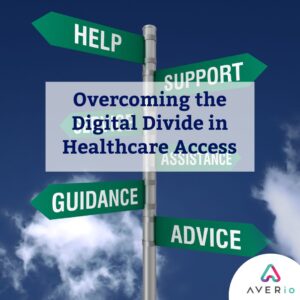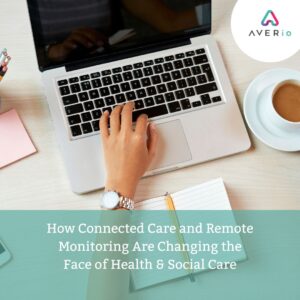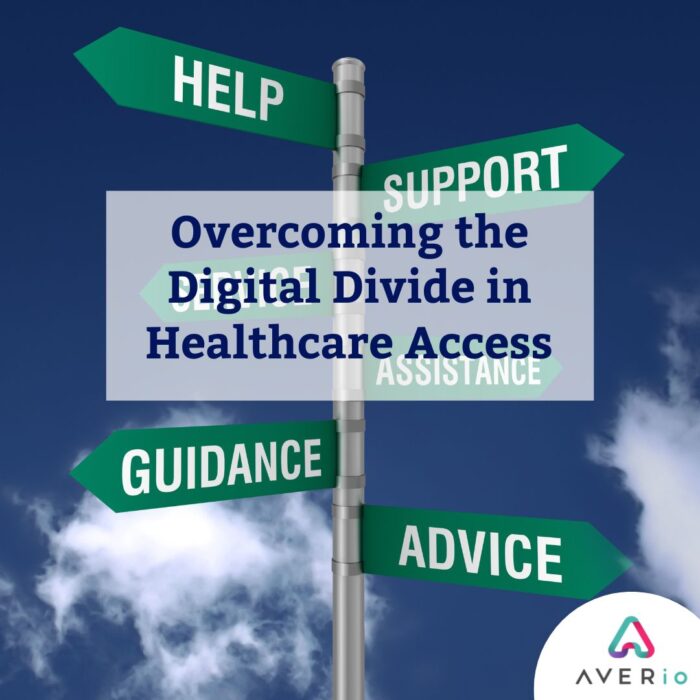
The digital gap, defined as discrepancies in access to and use of digital technology, is a major topic in healthcare. Access to healthcare services and information in today’s digital era frequently relies on digital technologies and platforms. However, not everyone has equal access to these resources, resulting in discrepancies in access to and results from healthcare. In this blog, we will look at the issues caused by the digital divide in healthcare and possible solutions.
Digital Divide Challenges in Healthcare:
Health Illiteracy: Some people may have low digital literacy abilities, which makes it difficult for them to explore online health information, book appointments, or use telemedicine services.
Language and Cultural Barriers: Language and cultural barriers can aggravate the digital divide even further. Non-English speakers may have difficulty finding healthcare information in their native languages online.
Limited Access to Technology & Financial Barriers: Many people, especially in underserved and rural areas, do not have mobile phones, computers, or high-speed internet connections, making it difficult to access online healthcare services. For low-income individuals and families, the cost of digital equipment and internet connectivity might be prohibitively expensive, prohibiting them from accessing online healthcare services.
Inequities in Health: The digital divide frequently mimics existing inequities in health. Those who are already marginalised in terms of healthcare access and results are further marginalised by their lack of internet access.
Strategies for Bridging the Healthcare Digital Divide:
Expand Broadband Access: Government and private sector initiatives should collaborate to bring broadband to underserved and rural areas. Access to low-cost internet can help overcome the digital divide.
Digital Literacy Programmes: In impoverished communities, implement digital literacy programmes to teach persons on how to use digital devices and access online healthcare information.
Language and Cultural Sensitivity: Develop healthcare websites and telemedicine platforms that are multilingual and culturally sensitive to varied communities.
Mobile-Friendly Resources: Create mobile-friendly healthcare apps and webpages for folks who use the internet primarily through mobile phones.
Community Health Workers: Deploy community health workers or navigators to help people in underprivileged communities access healthcare resources and telemedicine services.
Telehealth Hubs: Create telehealth hubs in underserved areas so that people can get telemedicine services even if they don’t have the appropriate technology at home.
Digital Inclusion Partnerships: Healthcare organisations can collaborate with local governments, non-profit organisations, and technology businesses to develop digital inclusion projects targeted at closing the digital divide.
Culturally Competent Care: Teach healthcare providers how to provide culturally competent care while taking into account the different requirements and backgrounds of individuals.
Finally, bridging the digital divide in healthcare is critical to ensure equitable access to healthcare services and information. Healthcare professionals and organisations may bridge the digital divide and promote health equity for all populations by implementing measures to increase digital access, improve digital literacy, and deliver culturally responsive treatment. Overcoming the digital divide is a step towards not only enhancing healthcare access, but also better health outcomes and eliminating healthcare inequities.
Related Articles

Empowering Next of Kin: Technology’s Role in the NHS and Social Care.
In the National Health Service (NHS) and social care sectors of the United Kingdom, next of kin play an important role in supporting their loved ones’ well-being and care needs. Historically, this responsibility has been fraught with issues such as

Promoting Independence for Older People
As the population ages, the National Health Service (NHS) and the social care sector have become more aware of the importance of promoting independence for older people. Encouraging older people to keep their autonomy and self-sufficiency improves their quality of

Harnessing Technology to Prevent Falls: Advances in the UK NHS and Social Care
Falls among the elderly are a big concern for the UK’s National Health Service (NHS) and social care sector. Falls can have significant repercussions, including injuries, hospitalisations, and a decline in overall health and independence. However, technological breakthroughs provide intriguing

Overcoming the Digital Divide in Healthcare Access
The digital gap, defined as discrepancies in access to and use of digital technology, is a major topic in healthcare. Access to healthcare services and information in today’s digital era frequently relies on digital technologies and platforms. However, not everyone

How Connected Care and Remote Monitoring Are Changing the Face of Healthcare
With the introduction of telemedicine and remote monitoring technology, the healthcare environment is undergoing a revolutionary transformation. These cutting-edge solutions are transforming healthcare delivery, making it more accessible, easy, and efficient. In this post, we will look at how connected

Ensuring Data Security and Privacy in Health Tech Solutions
The widespread adoption of health-tech solutions such as electronic health records (EHRs), telehealth platforms, and wearable gadgets has proclaimed a new era in healthcare. While these advancements have many advantages, they also pose serious issues about data security and individual

